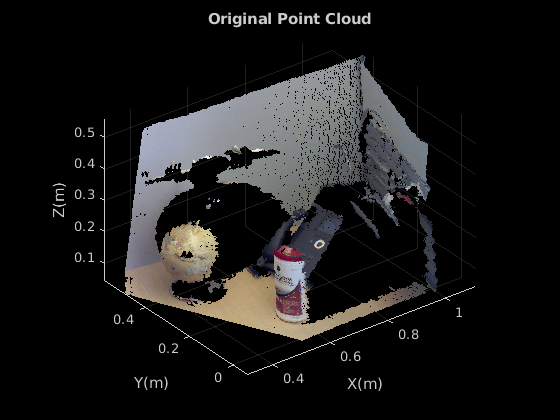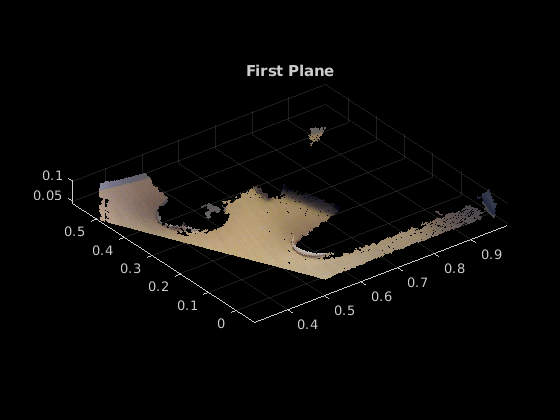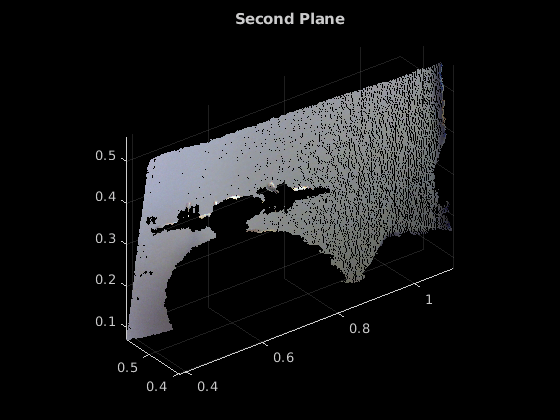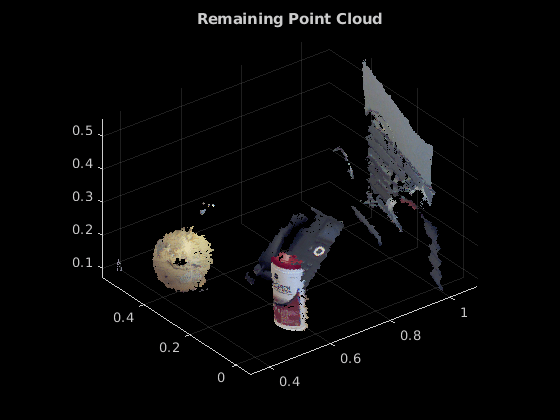pcfitplane
Fit plane to 3-D point cloud
Syntax
Description
model = pcfitplane(ptCloudIn,maxDistance)
This function uses the M-estimator SAmple Consensus (MSAC) algorithm to find the plane. The MSAC algorithm is a variant of the RANdom SAmple Consensus (RANSAC) algorithm.
model = pcfitplane(ptCloudIn,maxDistance,referenceVector)referenceVector input.
model = pcfitplane(ptCloudIn,maxDistance,referenceVector,maxAngularDistance)
[
additionally returns the linear indices to the inlier and outlier points in the
point cloud input.model,inlierIndices,outlierIndices]
= pcfitplane(___)
[ additionally returns the mean error of the
distance of inlier points to the model, using any of the preceding
syntaxes.model,inlierIndices,outlierIndices,meanError] =
pcfitplane(___)
[___] = pcfitplane(___,
specifies options using one or more name-value arguments in addition to any
combination of arguments from previous syntaxes. For example,
Name=Value)pcfitplane(ptCloud,maxDistance,referenceVector,maxAngularDistance,Confidence=95)
sets the confidence percentage for finding maximum number of inlier to
95.
Examples
Input Arguments
Name-Value Arguments
Output Arguments
References
[1] Torr, P. H. S., and A. Zisserman. “MLESAC: A New Robust Estimator with Application to Estimating Image Geometry.” Computer Vision and Image Understanding. 2000.
Extended Capabilities
Version History
Introduced in R2015b
See Also
Objects
Functions
pcshow|pcwrite|pcread|pcfitsphere|pcfitcylinder|findPointsInROI|pcmerge|pctransform|pcregistericp|pcdenoise



